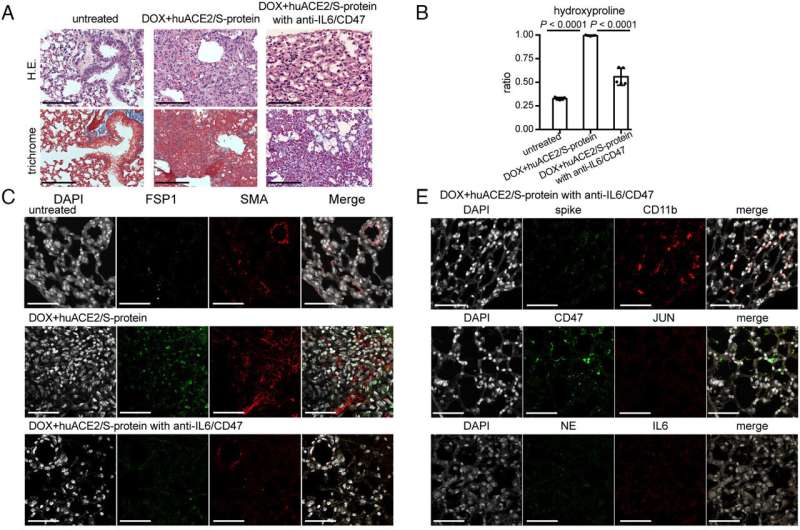February 28, 2023 report
This article has been reviewed according to Science X's editorial process and policies. Editors have highlighted the following attributes while ensuring the content's credibility:
fact-checked
peer-reviewed publication
trusted source
proofread
A possible way to prevent or treat lung damage associated with long COVID

A team of medical researchers at Stanford University, working with a colleague from the Institute of Biomedical Sciences in Taiwan, has discovered a possible way to prevent or treat lung damage associated with long COVID. In their study, published in Proceedings of the National Academy of Sciences, the group isolated genes associated with inciting an inflammatory overreaction to a COVID-19 infection in the lungs and turned them off in test mice to prevent lung damage.
The global pandemic has proven to be uniquely challenging; from efforts to stop its spread to the development of therapeutics and vaccines and the advent of anti-vaxxers combating scientific advances, the SARS-CoV-2 virus has shown itself to be a formidable adversary. And while the amount of attention given to the pandemic has dwindled, the virus has still not gone away. And neither has its ability to leave some victims with long-lasting, sometimes permanent physical damage.
Called long COVID, the damage wrought by the virus can occur in a variety of organs, including the brain, the heart and the lungs. In this new effort, the team in California noted that more than 200 people have undergone lung transplants due to the damage done by a COVID-19 infection. Suspecting that it might have a genetic basis, the group undertook a sequencing study comparing such patients with others who had no such damage.
In their study, the research team found that the lung damage caused by a COVID infection was actually caused by an overreaction of the immune system to the virus and resulting inflammation. To test the possibility of averting such an overreaction, the team transplanted human lung organoids into test mice and infected them with an engineered version of the SARS-CoV-2 virus. This led to the kind of damage seen in human patients with standard COVID infections. They then gave the test mice antibodies designed to block the genes in their lungs that were associated with overreaction to virus exposure and the associated inflammation. Four weeks later, tests showed that the treatment led to reductions in fibroids and lung tissue that had returned to normal.
The team notes that more testing is required, but suggest that their approach could represent a potential therapeutic approach to preventing and treating lung damage in patients due to long COVID.
More information: Lu Cui et al, Innate immune cell activation causes lung fibrosis in a humanized model of long COVID, Proceedings of the National Academy of Sciences (2023). DOI: 10.1073/pnas.2217199120
© 2023 Science X Network

















